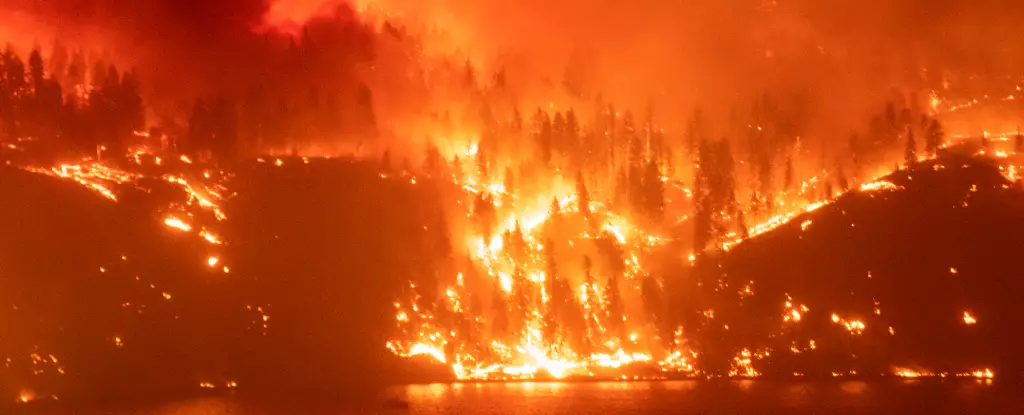Across the globe, fires are no longer isolated incidents. From the urban landscapes of Los Angeles to the ancient forests of Colorado, from the lush hills of the southern Appalachians to the scenic vistas of Maui, the realities of fire are omnipresent. This trend stretches beyond American borders; wildfires are increasingly common in many regions, including Canada, Australia, Greece, and Portugal. The devastation is not merely localized; the smoke billows across continents, reminding all of us of the fire’s far-reaching impacts. Is the planet on the brink of an unsettling future dominated by flames, a narrative devoid of context that thrills us as we stand at the edge of catastrophe? As a historian specializing in fire, I argue that we not only have a consistent narrative linking our past to our present but also an elegant analogy illustrating our precarious relationship with fire.
Humanity’s Enduring Connection with Fire
Human history is steeped in the flames of fire. It is a connection that has endured for approximately 11,500 years, as fire has evolved alongside humanity and altered the landscapes we inhabit. Fire has not only shaped civilizations but has also transformed natural ecosystems. The broad scale of human interaction with fire has profound implications; recent research suggests that the extensive depopulation in the Americas allowed forests to regain territory, sequestering atmospheric carbon, and potentially ushering the planet into the Little Ice Age from the mid-1500s to the mid-1800s. However, fire is not simply a neutral element. The evolutionary dance between life and fire has constrained humanity’s ability to manipulate flames—historically, ecological checks maintained this balance.
But the rise of fossil fuel consumption has altered this balance, introducing an uncontrollable component to the mix. The combustion of fossil fuels has transcended natural patterns, leading to unprecedented levels of fire that escape the traditional limits imposed by nature. Not only has this development exacerbated climate change, but it has also fostered conditions conducive to an increase in wildfires. The shift toward a fossil-fuel-centered civilization has fundamentally changed how we interact with our environment, impacting agricultural practices, urban design, energy generation, and even our strategies for battling wildfires.
As modern society responds to the growing intensity of wildfires, it often resorts to industrial tools and technologies rather than relying on nature’s innate ability to manage fire. Instead of containing flames using traditional methods, we increasingly employ industrial means—machines, engines, and aerial units—to mitigate the flames of destruction. This “pyric transition” creates a complex interplay between the natural fires that burn in landscapes and the industrial fires stemming from fossil fuel consumption, leading to unpredictable outcomes. Like two wrestling giants, the interaction between these types of fires can sometimes be complementary yet also dangerously competitive. Consequently, with the increasing frequency and intensity of wildfires, the dynamics between constructed landscapes and natural environments become increasingly perilous.
The anticipation for more intense wildfires was palpable long before the immediacy of climate change came to light in the 1990s. Acknowledging this issue, land management authorities in the United States have worked for over half a century to reintroduce fire as a viable landscape management practice. Nevertheless, these efforts have yet to curb the overwhelming presence of uncontrolled fires. The complexity of fire makes it difficult to pinpoint a single causal factor; instead, it synthesizes its surrounding influences—like a driverless car manipulating obstacles on the road.
Modernity itself seems to feed the flames as megafires become more prominent, paralleling the behavior of hurricanes that thrive on warm ocean waters. In the United States, the rise of these “monster fires” correlates with significant historical changes, such as land-clearing and logging practices during the late 19th and early 20th centuries. This destructive engagement with fire led to federal interventions aimed at environmental conservation. Yet, in attempting to suppress natural fires, we frequently removed the ecological benefits they provided, resulting in fuel build-up over time and increasing the risk for catastrophic blazes.
As vast areas continue to burn under shifting ecological thresholds, one might observe the emergence of a new epoch—one that mirrors the ice ages of prehistory but is characterized by fire. Humanity’s longstanding relationship with fire, now intensified by anthropogenic practices, engenders a climatic era where fire becomes both a driving force and a predominant expression. The fires we experience today are the echoes of historical transformations, and they pose a unique threat: a Pyrocene characterized by widespread and relentless flames.
As we grapple with the unyielding force of fire in this incendiary age, it is essential to recognize our role in shaping the landscapes we inhabit. The intertwining destinies of natural and industrial fires call for a deeper understanding of fire history as part of our ecological narrative. The multifaceted effects of our past decisions—the destruction of ecosystems, the frequency and intensity of wildfires, and the socio-economic consequences—result in a complex pyrogeography that challenges our very existence on Earth. It is not mere doubt that beckons us to inquire about our future; it is an urgent call to action. Understanding the implications of the Pyrocene can help steer humanity towards a more harmonious existence with fire, one that could prevent the perpetuation of a fiery legacy.


Leave a Reply